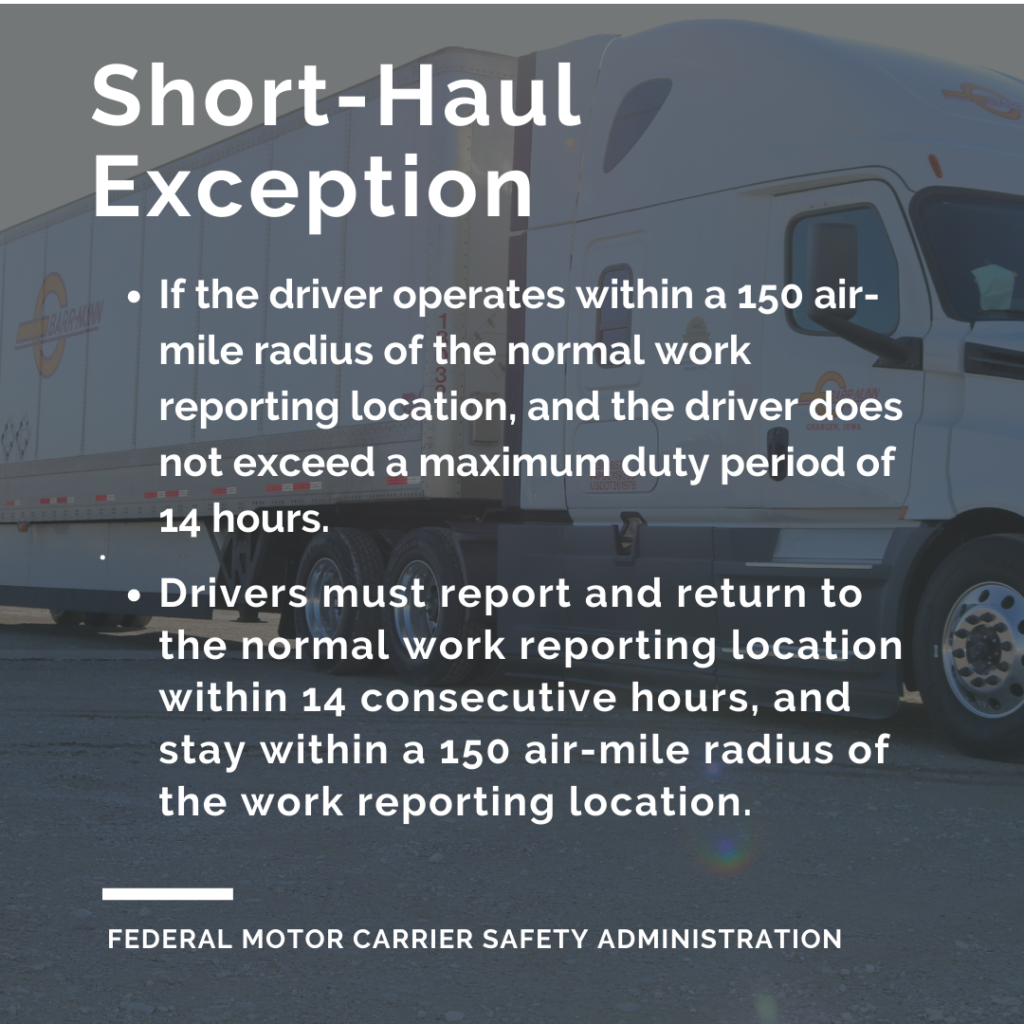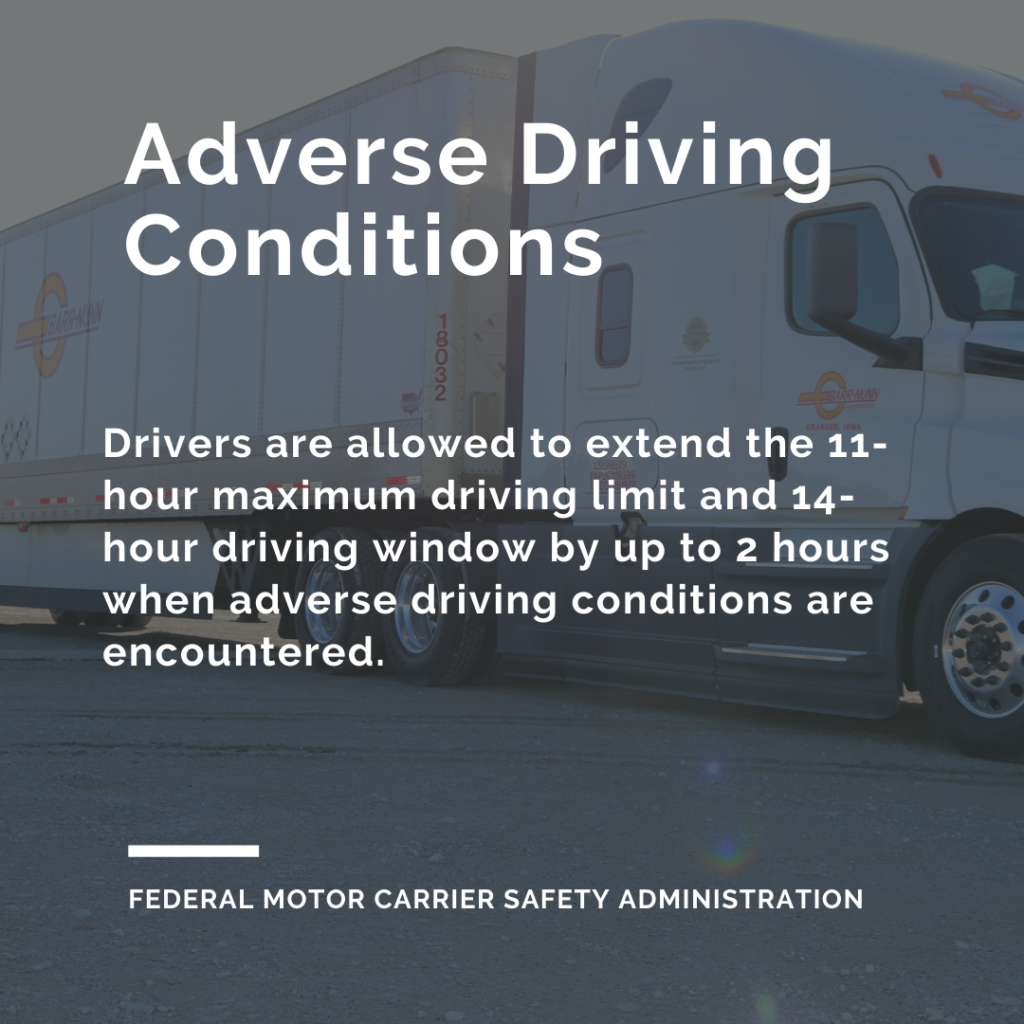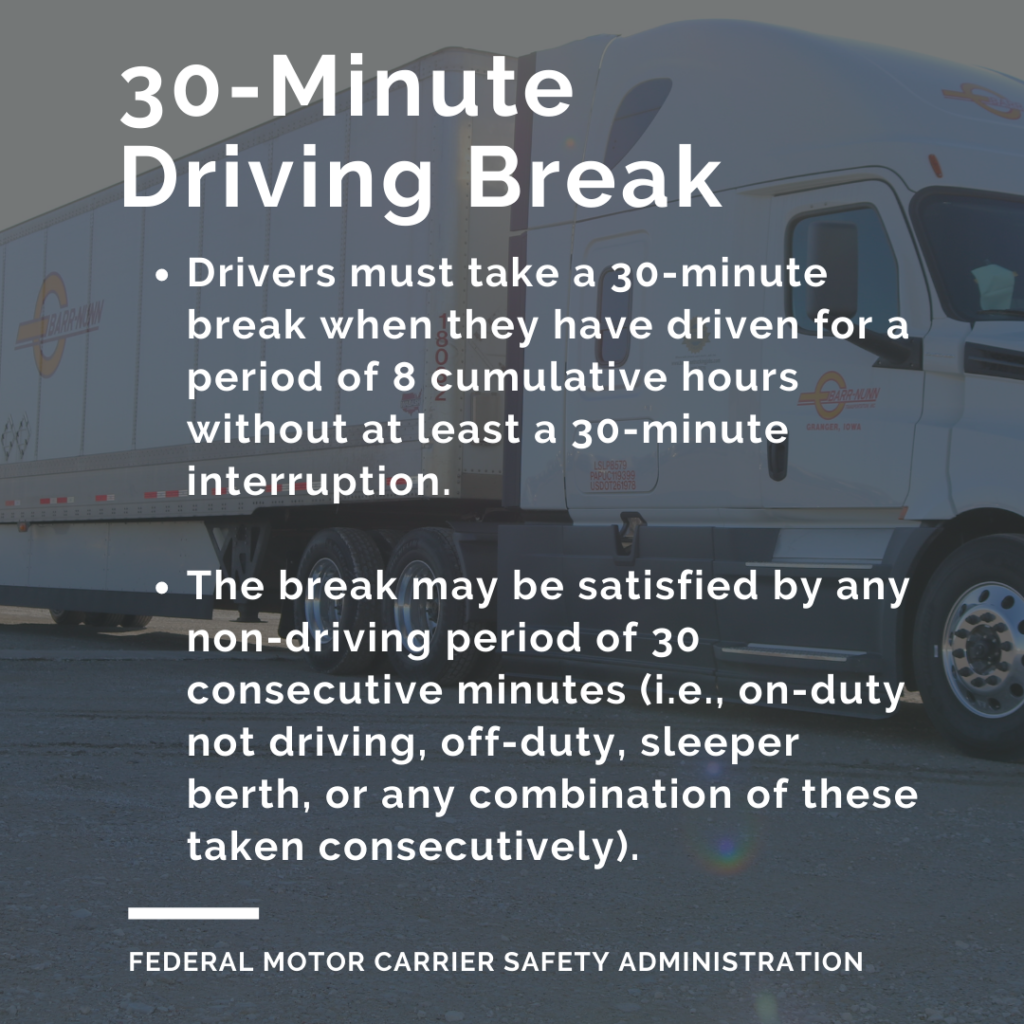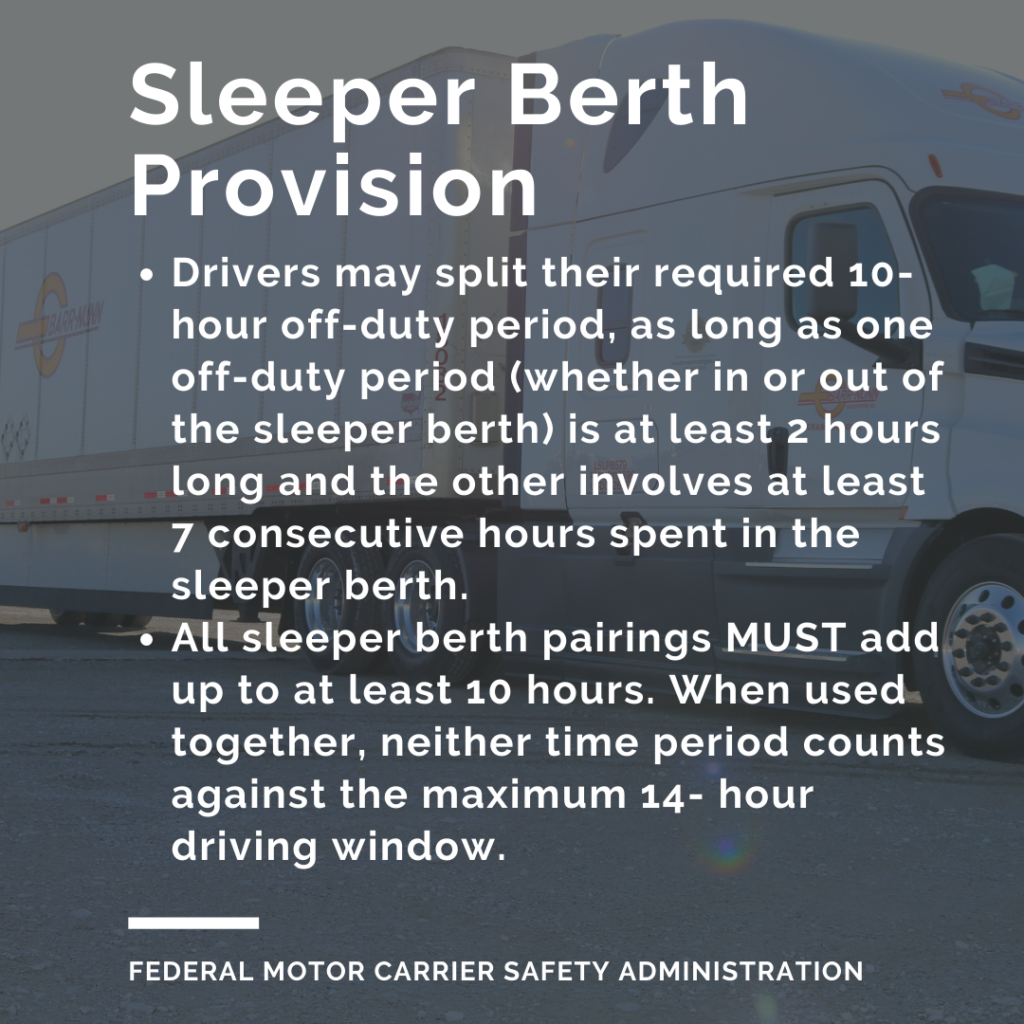2020 Service Hours Changes: What Truck Drivers Need to Know

For the first time in nearly 15 years, the Federal Motor Carrier Safety Administration (FMCSA) updated rules regulating truck driver hours of service. FMCSA stated its goal is to provide truck drivers will more flexibility in managing time on duty. The government agency calls the latest shift to modernize regulations while attempting to keep America’s roadways safe. 3.5 million truck drivers (census.com) are involved in approx. 500,000 truck driving-related accidents each year (mcaleerlaw.com). The federal government is trying to balance the efficient distribution of products to stores and saving lives. There are four service hour changes impacting truck drivers that went into effect on September 29, 2020.
Short-Haul Exception
Previously, truck drivers using the short-haul exception were not allowed on-duty for more than 12 hours or able drive beyond a 100 air-mile radius, or 115 miles. If those limits were exceeded, the exception would end, and drivers were required to complete a record of duty status (RODS) and take a 30-minute break. Additionally, if a driver exceeded short-haul exception limits for more than eight days in any consecutive 30-day period, an electronic logging device (ELD) is required.
The new rule extends truck driver workdays from 12 to 14 hours and increases the distance restriction from 100 air miles to 150 air miles. The updated Short-Haul Exemption is intended to add flexibility and allow more drivers to fall under the short-haul exception.

Adverse Driving Conditions
Under the old provision, drivers could activate the adverse driving conditions provision to extend their drive time for up to two hours but couldn’t extend on-duty time. Because the adverse driving conditions provision needed to be known by the dispatcher before a run started, it was hard to use and not widely adopted.
The new rule addresses adverse driving conditions not known to the dispatcher or driver before a required break. The driving window is extended for up to two hours. The update is intended to provide drivers with the ability to wait out weather-related conditions and not drive through them. FMCSA advises drivers to indicate the adverse driving conditions on approved electronic logging devices.

30-Minute Rest Break
The old 30-minute break rule required drivers to take a break of 30 consecutive minutes after driving for 8 hours.
The new rule allows the rest break to be fulfilled through 30 minutes of on-duty and nondriving time. A trucker can take the break while completing tasks like getting fuel or securing a load.

Sleeper Berth Provision
The previous rules allowed an 8/2 split, with the two hours counting against a driver’s 14-hour limit.
The new rule modifies the sleeper berth exception allowing drivers to take the 10 hours off-duty in two periods, granted one off-duty period (in or out of the sleeper berth) is at least two hours long, and the off-duty period includes at least seven consecutive hours spent in the sleeper berth. Neither off-duty period will count against the maximum 14-hour driving window.

What Service Hours Changes Mean for Truck Drivers
Depending on the company you work for and the types of truck driving you do, the Hours of Service changes will affect you differently. Some truck drivers welcome the new changes, while others are skeptical the changes will make much of an impact. Either way, as a truck driver, it’s your responsibility to adhere to the new regulations or face penalties. We’ve found the biggest impact for our truck drivers is the 30-minute rest break changes. Drivers seem to feel it allows for more flexibility in fulfilling the requirement.
What Truck Drivers Should Do Now
For additional information about Hour of Service changes that took effect on Sept. 29. 2020 visit the Federal Motor Carrier Safety Administration website or contact your company’s compliance department.
For more about driving for Barr-Nunn Transportation, read our FAQ.
Interested in driving for Barr-Nunn Transportation? Search Truck Driving Positions or Apply Now!
You may also enjoy: Dashcams For Truckers: What You Need to Know